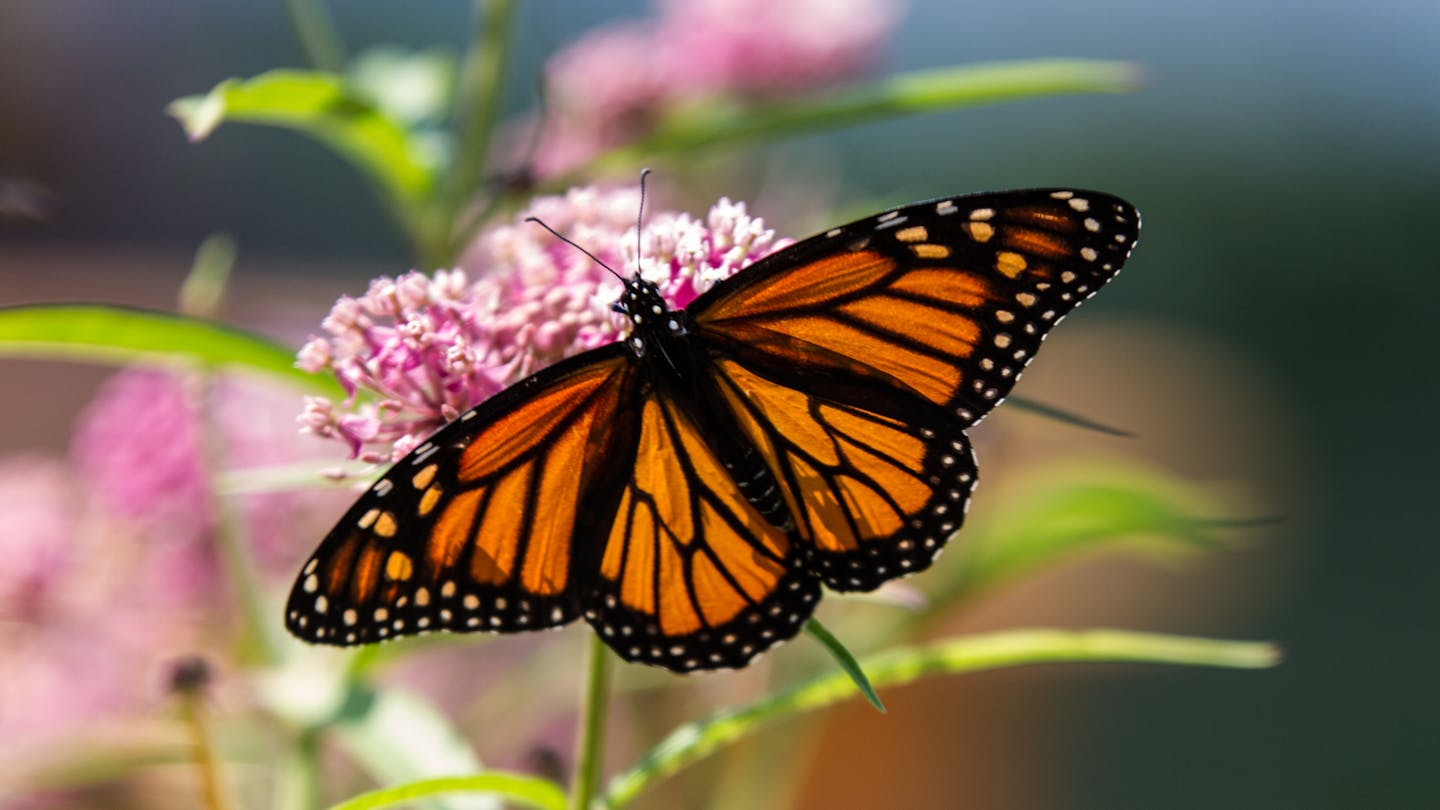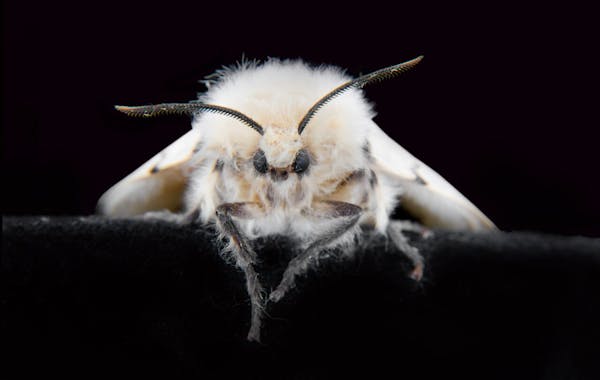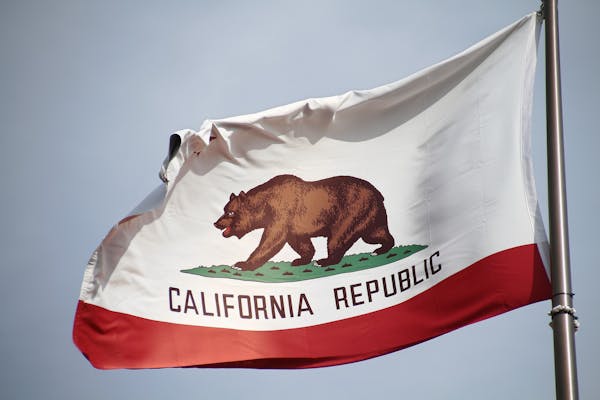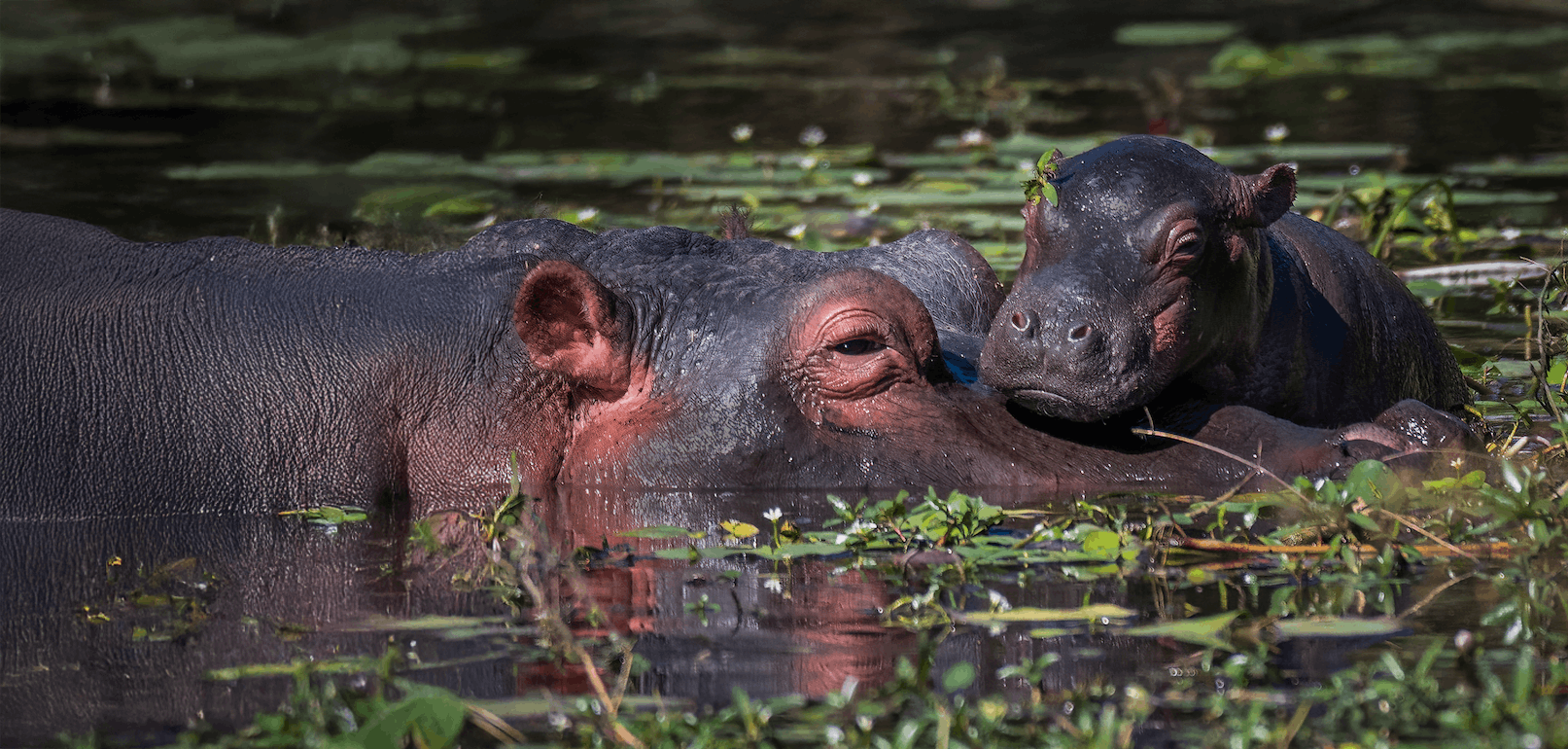The monarch butterfly: Nature's delicate voyager
- Nature Conservation
- Land Conservation
- Iconic Species
- Pollinators
- Insects
- North Pacific
- Northern America Realm
One Earth’s “Species of the Week” series highlights an iconic species that represents the unique biogeography of each of the 185 bioregions of the Earth.
Every autumn, as the leaves turn gold and the air grows crisp, an extraordinary migration unfolds across North America. Millions of monarch butterflies (Danaus plexippus), their vibrant orange and black wings glinting in the sunlight, embark on an epic journey spanning thousands of miles in search of warmer climates and suitable overwintering grounds.
From Canada and the United States, they make their way to the oyamel fir forests of central Mexico, traveling up to 3,000 miles—one of the longest migrations in the insect world.
These delicate creatures, each weighing less than a paperclip, are not just a marvel of nature but also vital players in their ecosystems. Yet, despite their resilience and beauty, monarch butterflies face a perilous future.
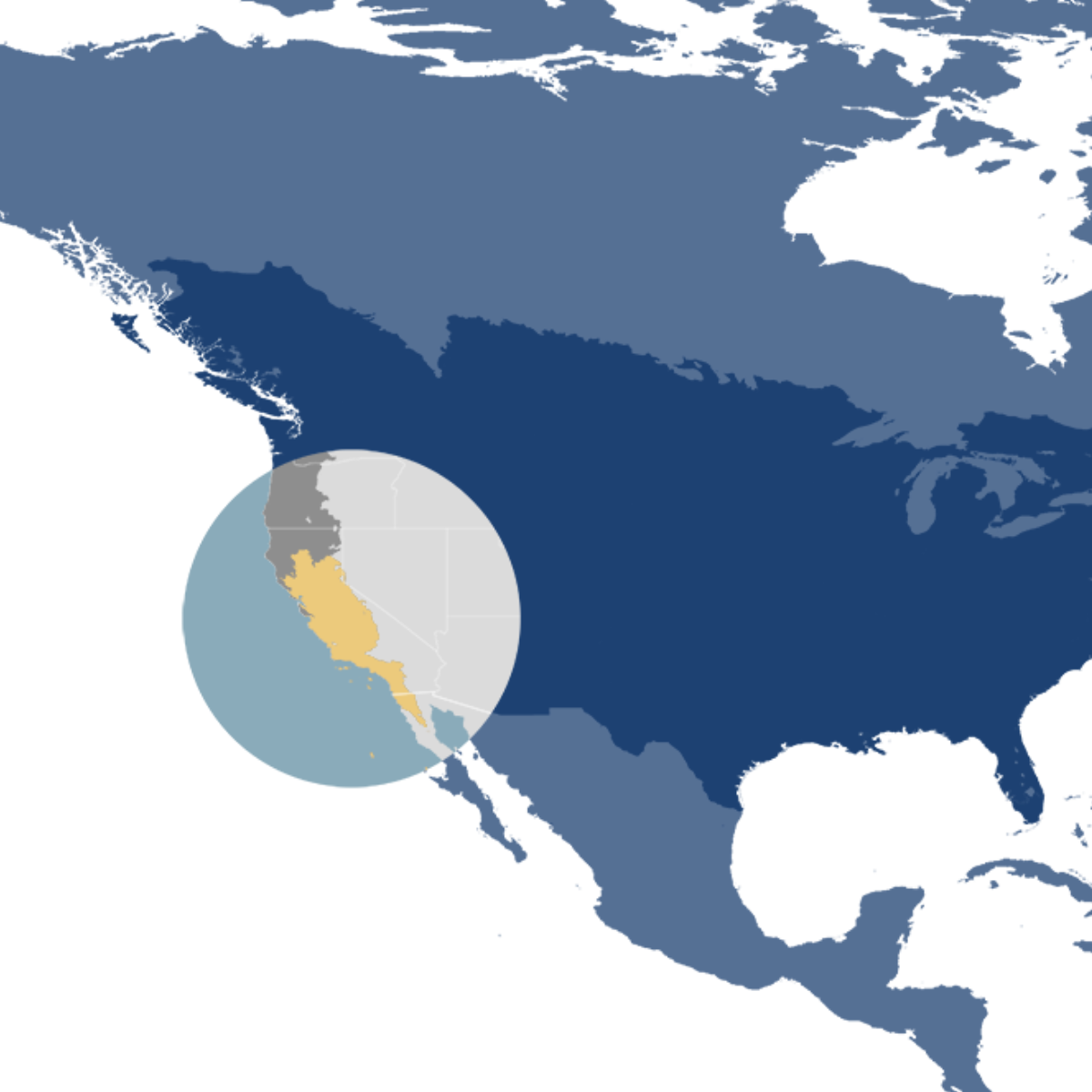
The monarch butterfly (Danaus plexippus) is the iconic species of the Greater California bioregion (NA31), located in the North Pacific Coast subrealm of Northern America.
Habitat and environment
Monarch butterflies are found primarily in North America, though smaller populations exist in parts of South America, Australia, New Zealand, and Hawaii.
Their habitats are as varied as their migration routes: summer breeding grounds in the milkweed-filled meadows of the United States and Canada, wintering sites in the mountain forests of Mexico, and scattered coastal groves in California.
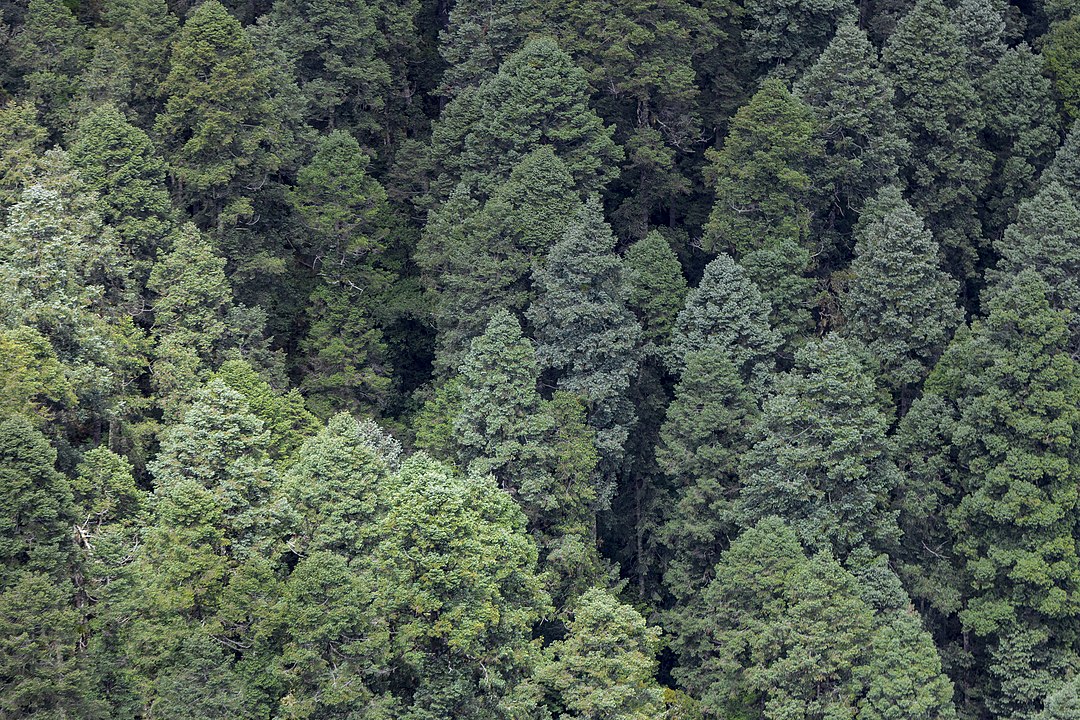
Abies religiosa forest from above, Parque Nacional El Chico, Hidalgo, Mexico. Image Credit: CC by 2.0, Rafael Saldaña.
The oyamel fir forests of Mexico
The monarch's wintering habitat in Mexico is a UNESCO World Heritage site—a forest shrouded in mist and dappled sunlight. The oyamel fir trees (Abies religiosa) serve as a sanctuary, offering the perfect microclimate for the butterflies to cluster together for warmth and protection.
Beyond temperature regulation, the dense forest canopy shields the monarchs from heavy rain, strong winds, and sudden temperature drops, which could otherwise be fatal.
This unique ecosystem is irreplaceable, as the monarchs rely on these specific conditions to conserve energy and survive the winter months before beginning their journey northward.
However, these habitats are under threat. Deforestation, illegal logging, and land-use changes in Mexico jeopardize their overwintering grounds. In the US and Canada, widespread pesticide use and the loss of milkweed—the monarch's host plant—are decimating breeding habitats.
%20on%20Oyamel%20fir%20(Abies%20religiosa)%20Piedra%20Herrada%2C%20Valle%20de%20Bravo%2C%20Mexico.%20By%20Charles%20J.%20Sharp%20-%20Own%20work%2C%20from%20Sharp%20Photography.jpg)
Monarch butterflies (Danaus plexippus) on oyamel fir (Abies religiosa). Piedra Herrada, Valle de Bravo, Mexico. Image Credit: CC BY-SA 4.0, Charles J. Sharp | Sharp Photography.
Physical traits and behavior
Monarch butterflies are unmistakable with their bold orange and black patterned wings dotted with white spots. This bright coloration warns predators of their toxicity.
Males can be distinguished by two black spots on their hind wings and thinner black webbing pattern, while females lack these spots and have thicker black webbing. Monarchs have a wingspan of around 4 inches (90–100 mm).
The milkweed connection
Monarch caterpillars are exclusively dependent on milkweed plants (Asclepias species). The leaves provide both food and a chemical defense, as they contain toxic compounds called cardenolides, which make the monarchs poisonous to predators.
However, milkweed is disappearing at an alarming rate due to widespread herbicide use in industrial agriculture, urbanization, and roadside maintenance practices. These activities are drastically reducing the availability of this critical plant, threatening monarch reproduction and survival.
.%20Monarch%20Butterflies%20cluster%20together%20on%20the%20pines%20and%20eucalyptus%20trees%20during%20their%20migration%20to%20overwinter%20in%20Monarch%20Grove%20Sanctuary%2C%20Pacific%20Grove%2C%20CA.%20shutterstock_103834388resized.jpg)
Monarch butterflies (Danaus plexippus) cluster together on pines trees during their migration to overwinter in Monarch Grove Sanctuary, Pacific Grove, CA. Image Credit: Shutterstock.
An epic migration
Perhaps the most astonishing aspect of monarch behavior is their migration. No single butterfly completes the full round trip; instead, it takes multiple generations to make the journey.
Monarchs born in late summer enter a phase called “diapause,” delaying reproduction and focusing on migration. These “super generation” monarchs can live up to nine months—much longer than the typical lifespan of two to six weeks.
The life cycle
- Egg Stage: Tiny, pearl-like eggs are laid on the underside of milkweed leaves.
- Caterpillar Stage: After hatching, the caterpillar feasts on milkweed, growing rapidly and shedding its skin several times.
- Chrysalis Stage: The caterpillar forms a jade-green chrysalis adorned with golden specks.
- Adult Stage: A fully formed butterfly emerges, ready to feed on nectar and, if part of the migratory generation, begin its long journey.
Ecological significance
Monarch butterflies play a role in pollination, visiting a variety of wildflowers as they feed on nectar. While they may not be the most efficient pollinators, their widespread range allows them to contribute significantly to maintaining biodiversity.
As an indicator species, monarchs serve as a bellwether for environmental health. Their population trends reflect broader ecological shifts, particularly concerning habitat loss and pesticide use.
The decline of monarch populations disrupts ecosystems and food chains. Birds, insects, and other animals that rely on milkweed or monarchs as part of their diet suffer cascading effects when monarch numbers plummet.
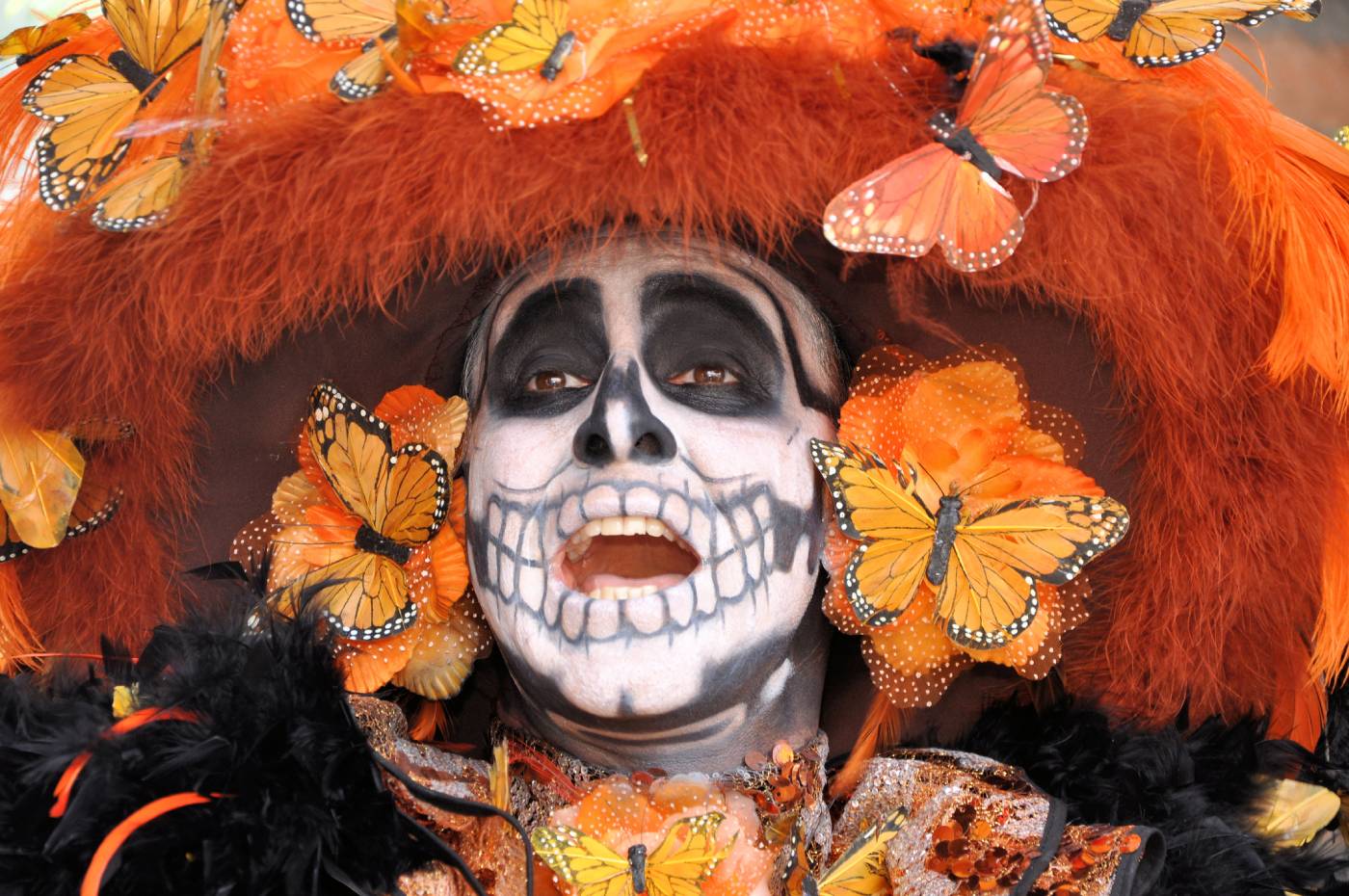
Image of a Mexican Catrina celebrating the Day of the Dead representing the monarch butterfly. Image Credit: Enrique Gomez Tamez | Dreamstime.
Cultural significance
Monarch butterflies have long symbolized change, resilience, and hope. Their metamorphosis—from egg to caterpillar, from chrysalis to butterfly—has made them powerful symbols in art, literature, and spirituality.
In Mexican culture, monarchs hold profound significance. Their arrival in central Mexico coincides with the Día de los Muertos (Day of the Dead). Many Indigenous communities see monarchs as the returning souls of deceased loved ones, bringing comfort and connection between worlds.
Among Native American tribes, the Ojibwe believe butterflies carry dreams and messages to the spirit world, while the Navajo see them as symbols of transformation and renewal. Their migration, crossing vast landscapes, is often seen as a metaphor for life's journey and the cycle of death and rebirth.
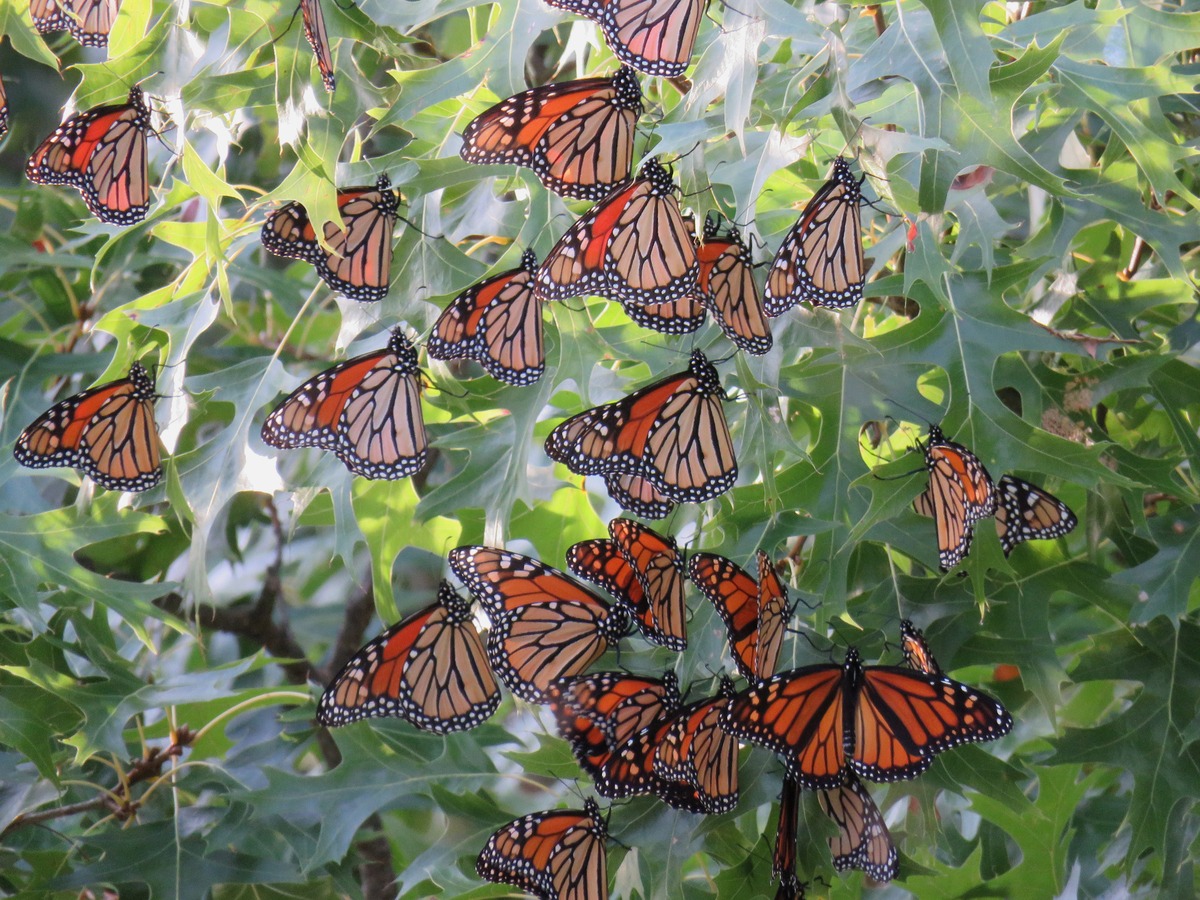
Roosting monarch butterflies in an oak tree at Port Louisa National Wildlife Refuge in Iowa. Image Credit: USFWS midwest, Wiki Commons.
Conservation status and challenges
In 2022, the International Union for Conservation of Nature (IUCN) listed the migratory monarch butterfly as Endangered. Their numbers have declined by as much as 90% over the past two decades. Federal protection under the Endangered Species Act is currently being proposed in the US.
Primary threats:
- Habitat Loss: Deforestation in Mexico and the loss of milkweed in North America.
- Pesticides: Herbicides like glyphosate eliminate milkweed, while insecticides harm both caterpillars and adult butterflies.
- Climate Change: Erratic weather patterns disrupt migration cues and damage overwintering habitats.
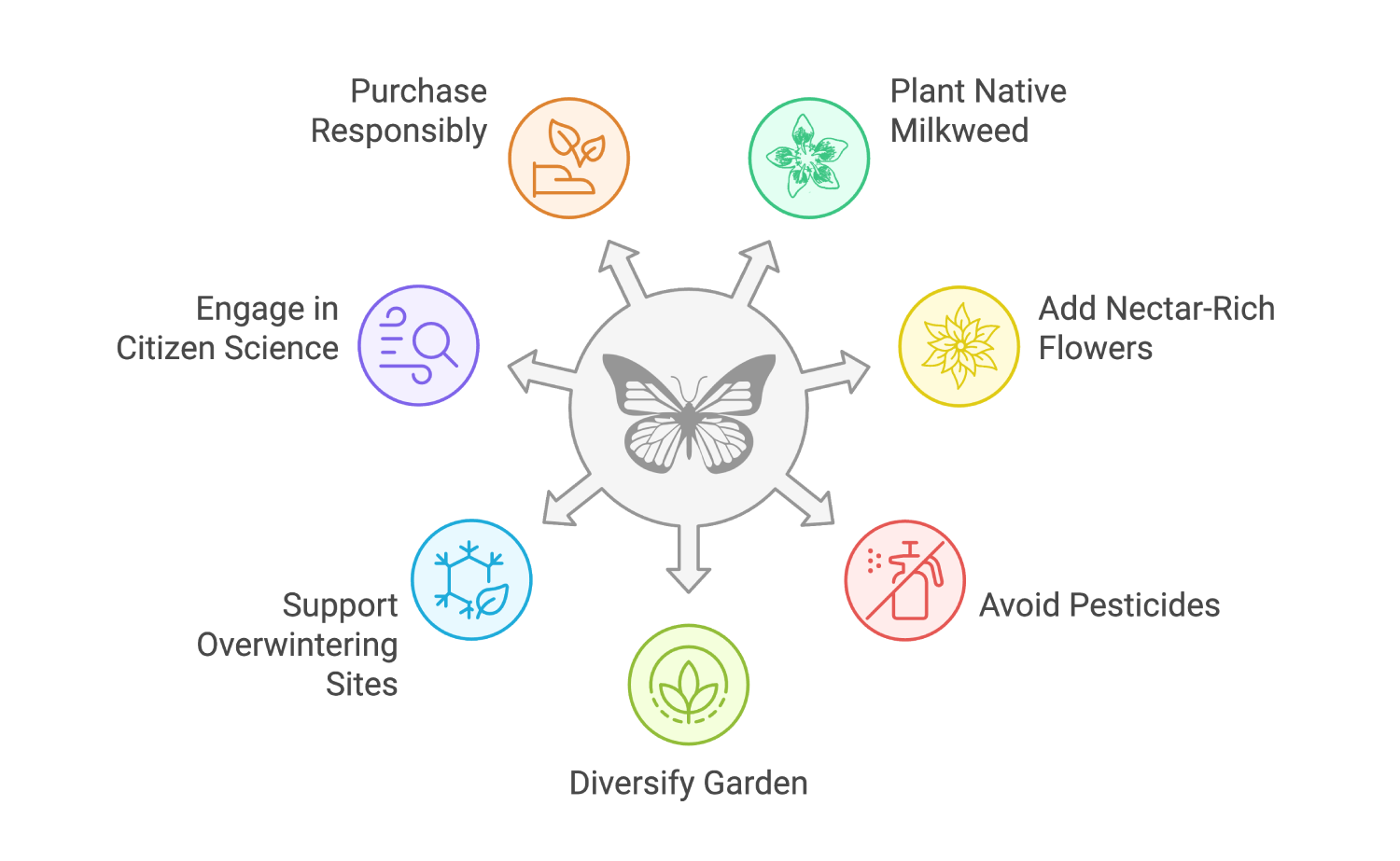
Seven ways to help monarch butterflies thrive. Image credit: One Earth
How you can help monarchs thrive
If you live in an area that is home to monarch butterflies, you can take several impactful actions to help. Whether you have a garden, a balcony, or access to community spaces, you can make a meaningful difference in their survival.
1. Plant native milkweed
Monarch caterpillars feed exclusively on milkweed, making it essential for their survival. Choose milkweed species native to your region to avoid disrupting local ecosystems.
Examples for California include California milkweed (Asclepias californica), heartleaf milkweed (A. cordifolia), and desert milkweed (A. erosa).
2. Add nectar-rich flowers
Adult monarchs rely on nectar for energy during breeding and migration. Plant a variety of native, pesticide-free flowering plants that bloom throughout the growing season to provide continuous food sources.
3. Avoid pesticides
Pesticides, including herbicides and insecticides, can harm monarchs at all life stages. Ensure any plants you purchase are pesticide-free and avoid using harsh chemicals in your gardens.
4. Diversify your garden
Create a habitat that supports not only monarchs but also other pollinators and wildlife by planting a mix of native grasses, shrubs, and trees.
5. Support overwintering sites
If you live in areas where monarchs overwinter (e.g., coastal California), advocate for the protection of these habitats or participate in restoration projects.
6. Engage in citizen science
Participate in programs like Monarch Watch or Journey North to track monarch populations and migration patterns, contributing valuable data for conservation efforts.
7. Purchase responsibly
Source native plants from reputable nurseries that do not use harmful pesticides like neonicotinoids. Ask vendors about their pest control practices to ensure your plants are safe for pollinators.
By taking these steps, you can create a safe and supportive environment for monarch butterflies while contributing to broader conservation efforts.
Small actions, multiplied across thousands of gardens and hearts, can help ensure the monarch's wings continue to grace our skies.
Explore Earth's Bioregions